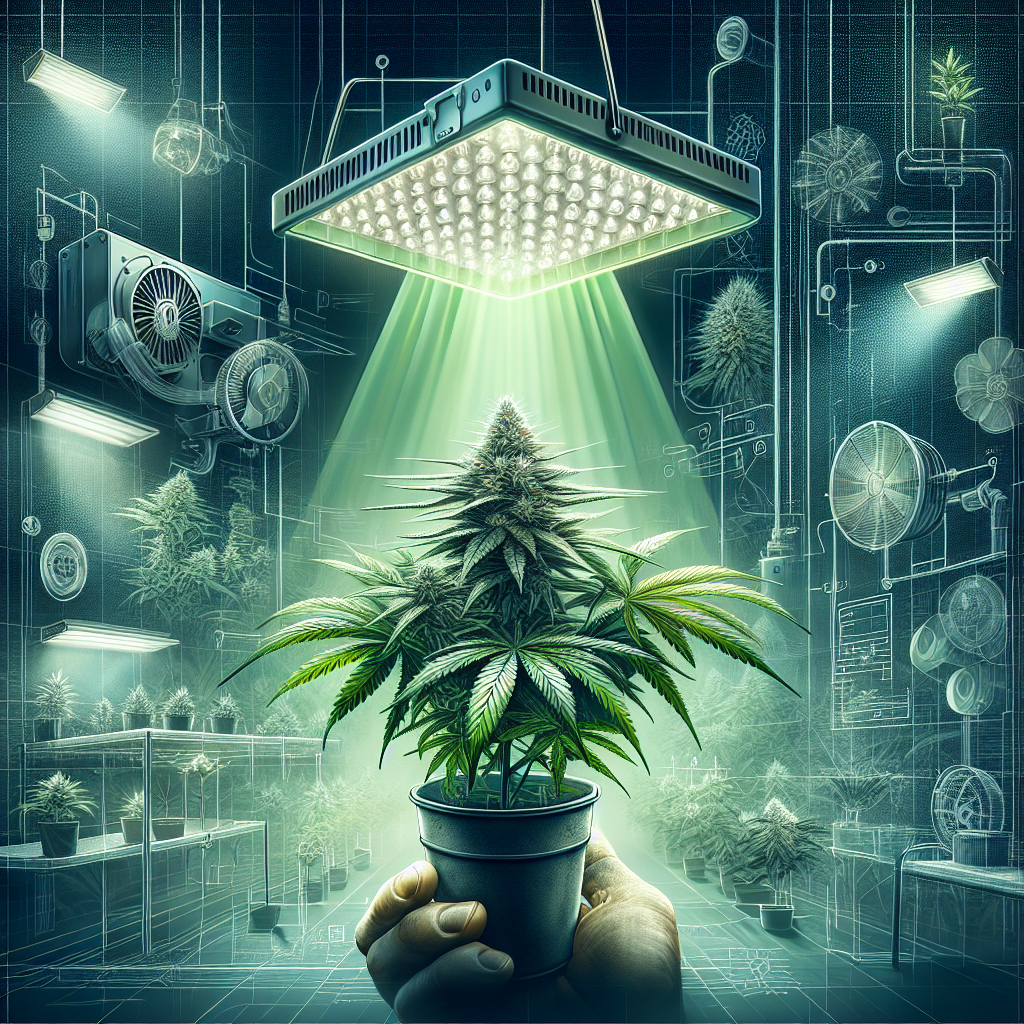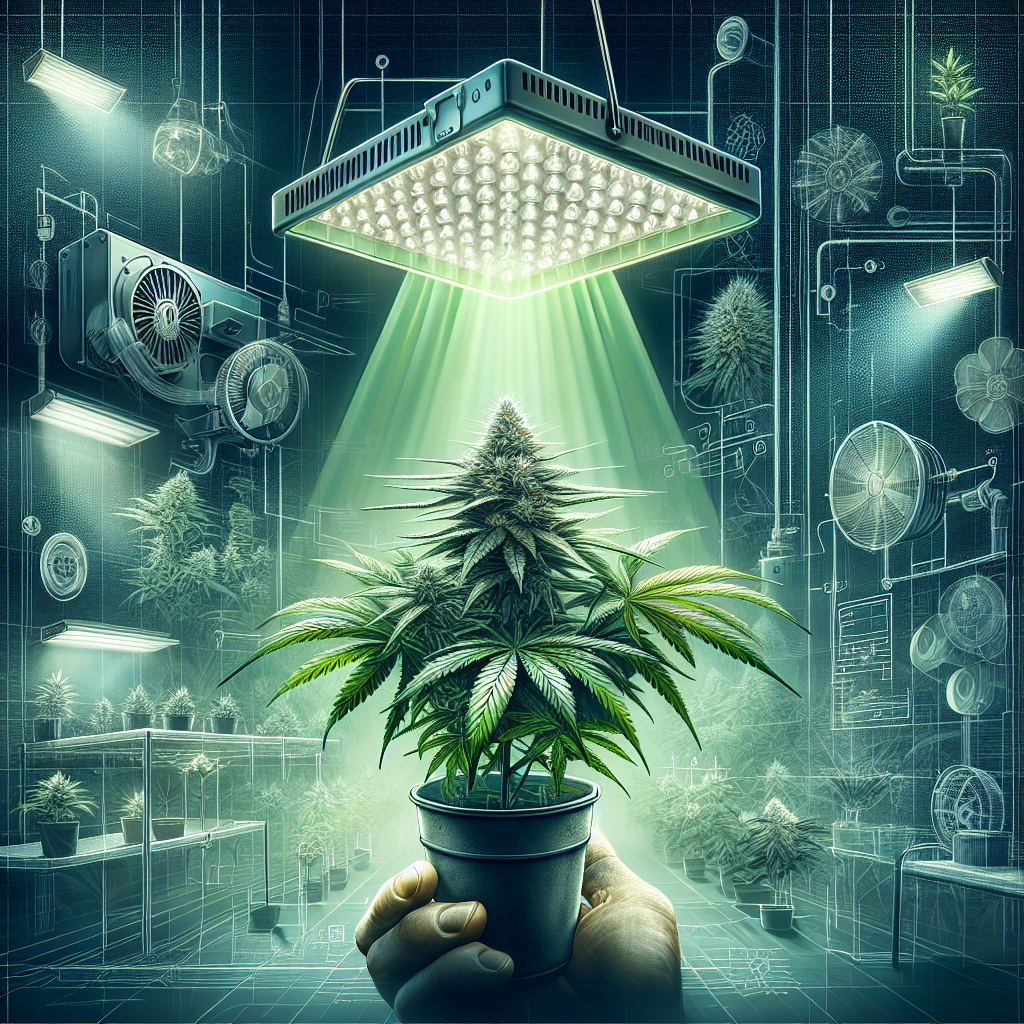Indoor Cannabis Growing Tips

Indoor Cannabis Growing Tips. If you’re considering growing cannabis indoors, you’ve come to the right place. In this article, we will provide you with valuable tips and insights to ensure a successful indoor cannabis growing experience. From choosing the right strain to understanding lighting and ventilation requirements, we’ve got you covered. So, whether you’re a seasoned grower looking to enhance your skills or a beginner eager to embark on this green journey, read on for some practical advice that will help you cultivate healthy and thriving cannabis plants right in the comfort of your own home.
Choosing the Right Strain
Understand your preferences
When it comes to choosing the right cannabis strain, it’s important to understand your preferences. Consider the effects you desire, whether it be a relaxing indica strain or an uplifting sativa strain. Think about the flavors and aromas that appeal to you. Are you looking for a strain with a citrusy taste or one with a more earthy scent? By knowing what you want, you can narrow down your options and find a strain that suits your needs.
Consider the growth characteristics
Different strains have different growth characteristics, so it’s crucial to consider these factors when selecting a strain for indoor cultivation. Some strains might be more suitable for small grow spaces, while others might require more vertical space to reach their full potential. Additionally, some strains might have a longer flowering time than others. Understanding these growth characteristics will help you plan and optimize your growing space accordingly.
Research reputable seed banks
To ensure you start with quality genetics, it’s recommended to research reputable seed banks. Look for seed banks with positive reviews and a track record of supplying high-quality seeds. A reputable seed bank will offer a wide selection of strains, ensuring you have plenty of options to choose from. Take the time to read reviews and do your due diligence to ensure you’re purchasing from a reliable source.
Select the appropriate strain
After considering your preferences, growth characteristics, and researching reputable seed banks, it’s time to select the appropriate strain for your indoor cannabis cultivation. Take into account the space you have available, the growing conditions you can provide, and any specific requirements of the strain. By carefully selecting the strain, you’ll set yourself up for success when it comes to your indoor cannabis growing journey.
Setting up the Growing Space
Determine the space requirements
Before setting up your indoor growing space, it’s essential to determine the space requirements for your plants. Consider factors such as the number of plants you intend to grow, their height and width when fully grown, and any additional space needed for equipment such as lights and ventilation systems. By accurately calculating the space requirements, you can ensure your plants have enough room to thrive.
Create a suitable environment
Creating a suitable environment for your indoor cannabis cultivation is crucial for achieving optimal results. Ensure the space is clean, well-ventilated, and free from pests. Consider factors such as temperature, humidity, and airflow. It may be necessary to invest in equipment such as fans or air conditioners to maintain the ideal environment for your plants. Additionally, ensure the area is secure and discreet to protect your plants and maintain privacy.
Ensure proper ventilation
Proper ventilation is essential for healthy plant growth. It helps maintain the right temperature, humidity, and CO2 levels. Poor ventilation can lead to issues such as mold, pests, and stunted growth. Consider installing fans or other ventilation systems to ensure a constant flow of fresh air throughout the growing space. Proper ventilation will promote strong and vibrant plants, reducing the risk of common growing problems.
Install the necessary lighting
Indoor cannabis plants rely on artificial lighting for their growth and development. It’s crucial to invest in suitable lighting systems to provide your plants with the energy they need. LED grow lights are a popular choice for indoor cultivators due to their energy efficiency and ability to emit a full spectrum of light. Determine the appropriate lighting intensity and duration for each stage of plant growth, using timers to maintain consistent light cycles.
Set up an effective irrigation system
Proper irrigation is crucial for providing your cannabis plants with the right amount of water without causing issues such as overwatering or underwatering. Consider using techniques such as drip irrigation or using a hydroponic system to ensure precise and efficient watering. Monitoring the moisture levels in the soil or medium and adjusting the watering schedule accordingly will help maintain healthy plants. Ensure proper drainage to avoid waterlogged conditions, as this can lead to root rot or other problems.

Providing Adequate Nutrients
Understanding the nutrient requirements
Cannabis plants require a range of essential nutrients to grow and thrive. Understanding their nutrient requirements is fundamental to achieving successful cultivation. The primary macronutrients needed by cannabis plants are nitrogen (N), phosphorus (P), and potassium (K). Additionally, they require secondary nutrients such as calcium (Ca), magnesium (Mg), and sulfur (S), as well as micronutrients like iron (Fe), manganese (Mn), and zinc (Zn). By providing a balanced and appropriate nutrient mix, you’ll promote healthy growth and maximize yields.
Invest in high-quality soil or medium
The choice of soil or growing medium is crucial for indoor cannabis cultivation. Investing in high-quality soil or a suitable hydroponic medium will provide a solid foundation for your plants’ root system. Look for soils that are specifically formulated for cannabis cultivation, as they often contain a balanced nutrient profile. If using a hydroponic system, consider options such as coco coir, rockwool, or perlite. Whatever medium you choose, ensure it has good drainage properties and is free from contaminants.
Choosing the right fertilizers
In addition to the nutrients provided by the soil or medium, cannabis plants may require supplemental fertilizers throughout their growth stages. There are many fertilizers available on the market, each with its own nutrient ratios and formulations. Opt for fertilizers specifically designed for cannabis cultivation, as they will provide the necessary nutrients in the correct proportions. Follow the recommended dosage instructions to avoid over or underfeeding your plants.
Follow a feeding schedule
Establishing a feeding schedule is essential for providing your plants with consistent and reliable nutrition. Different stages of growth require different nutrient ratios, so adjust your feeding regimen accordingly. Start with lower nutrient concentrations during the seedling stage and gradually increase as the plants mature. Be aware of the signs of nutrient deficiencies or excesses and make adjustments as necessary. Remember to flush your plants with plain water periodically to prevent nutrient buildup.
Monitor and adjust nutrient levels
Regular monitoring of nutrient levels is crucial to ensure your plants are receiving the proper nutrition. Use a pH meter and an EC (electrical conductivity) meter to test the pH and nutrient concentration of your water and nutrient solution. Adjust the pH levels to the appropriate range for cannabis cultivation (usually between 5.8 and 6.5). Monitor the EC levels to ensure they fall within the recommended range for each growth stage. Regularly check the plants for any signs of nutrient deficiencies or toxicities and adjust the nutrient levels accordingly.
Managing Light and Darkness
Understand light cycles for different growth stages
Cannabis plants have specific light requirements at different stages of growth. During the vegetative stage, they typically thrive under a longer photoperiod of around 18-24 hours of light per day. This extended light cycle promotes vigorous vegetative growth. In contrast, during the flowering stage, cannabis plants require a shorter photoperiod of around 12 hours of light per day and 12 hours of darkness. This shift in light cycle signals the plants to shift their energy towards flower formation.
Use timers and light-blocking techniques
To ensure your cannabis plants receive the correct amount of light during each growth stage, use timers to automate your lighting schedule. Timers will help maintain consistent photoperiods, eliminating any risk of human error. Additionally, use light-blocking techniques during the flowering stage to prevent any light leaks during the dark period. Even a small amount of light during the dark period can disrupt the flowering process and lead to reduced yields.
Provide the appropriate light intensity
Providing the appropriate light intensity is crucial for healthy plant growth. Cannabis plants require varying light intensities at different growth stages. During the vegetative stage, aim for a light intensity of around 600-1000 micromoles per square meter per second (µmol/m²/s). During the flowering stage, increase the light intensity to around 800-1200 µmol/m²/s to promote flower development. Use a light meter to measure the light intensity and adjust the height of your grow lights accordingly.
Prevent light leaks
Light leaks can disrupt the light-dark cycle and negatively impact the flowering process. Even small amounts of light leaking into the grow space during the dark period can confuse the plants and affect their ability to produce high-quality buds. Inspect your grow space for any potential light leaks, such as cracks in walls or gaps in the door. Use lightproof materials to seal any openings and ensure complete darkness during the required dark periods.

Controlling Temperature and Humidity
Maintain ideal temperature range
Temperature control is crucial for healthy cannabis growth. Aim to maintain a consistent temperature range of around 70-85°F (21-29°C) during the daytime and slightly lower at night. Fluctuations in temperature can lead to stress and affect plant growth and development. Consider using temperature control devices such as heaters or air conditioners to maintain a stable and suitable environment for your plants.
Manage humidity levels
Proper humidity levels are essential for healthy plant growth and to prevent issues such as mold and pests. During the vegetative stage, aim for humidity levels between 50-70%. This higher humidity range promotes robust growth. As the plants transition to the flowering stage, gradually decrease the humidity to around 40-50% to prevent mold formation. Use humidifiers or dehumidifiers to achieve and maintain the desired humidity levels.
Use ventilation and airflow techniques
Ventilation and airflow are key to maintaining optimal temperature and humidity levels. Adequate airflow helps prevent stagnant air, which can lead to mold and pests. Use fans or an exhaust system to increase air circulation within the grow space, ensuring fresh air is continuously supplied to the plants. Position fans strategically to promote even air distribution and prevent hotspots. Regularly inspect and clean ventilation equipment to ensure proper functioning.
Prevent mold and pests
High humidity levels and poor airflow can create ideal conditions for mold and pests to thrive. To prevent these issues, maintain appropriate temperature and humidity levels, as discussed previously. Additionally, regularly inspect your plants for any signs of pests such as spider mites or aphids. Introduce beneficial predatory insects, such as ladybugs or lacewings, to combat pest infestations naturally. If mold appears, increase airflow and use fans to remove excess moisture from the plant canopy.
Maintaining pH Levels
Understand the importance of pH
pH is the measure of the acidity or alkalinity of your water or nutrient solution. Maintaining the correct pH range is crucial for nutrient availability and optimal nutrient uptake by the plants. Cannabis plants generally prefer a slightly acidic pH range of around 5.8-6.5. If the pH is too high or too low, nutrient deficiencies or toxicities may occur, even if the nutrients are present in the soil or solution. Proper pH management is essential for healthy plant growth and maximum nutrient absorption.
Test and adjust pH regularly
Regularly testing and adjusting the pH of your water or nutrient solution is necessary to ensure your plants can properly absorb the nutrients they need. Use a pH meter or pH test kit to measure the pH level. If the pH deviates from the desired range, adjust it using pH-up or pH-down products. Aim to maintain the pH within the appropriate range throughout the entire growth cycle. Test the pH of your water or nutrient solution before each watering or feeding.
Choose pH-neutral water sources
Water quality plays a significant role in maintaining proper pH levels. If your tap water is too alkaline or acidic, it can affect the pH of your nutrient solution. Consider using pH-neutral water sources, such as reverse osmosis (RO) water or distilled water. These water sources tend to have a more neutral pH, making it easier to achieve and maintain the desired pH range. If using tap water, let it sit overnight to allow chlorine to evaporate before adjusting the pH.
Use pH buffers if necessary
In some cases, it may be challenging to maintain the desired pH range consistently. If you’re experiencing difficulty adjusting and stabilizing the pH, consider using pH buffers. These products help regulate the pH of your water or nutrient solution, providing a more stable environment for your plants. However, it’s important to monitor the pH carefully even when using buffers to ensure it remains within the appropriate range.
Pruning and Training Techniques
Promote proper plant structure
Pruning and training techniques help promote proper plant structure, optimize light penetration, and increase airflow. Remove any dead or diseased leaves regularly to prevent the spread of pathogens. Trim lower branches that receive minimal light to focus energy on the upper canopy. Promote an open and even canopy, ensuring that each bud site receives sufficient light. By pruning and maintaining proper plant structure, you can increase the overall health and yield of your cannabis plants.
Familiarize yourself with pruning methods
There are several pruning methods that cannabis growers can utilize to enhance plant structure and maximize yields. The main techniques include topping, which involves cutting the main stem to encourage bushier growth, and lollipopping, which removes lower foliage and focuses energy on the upper buds. Additionally, there is defoliation, which selectively removes large fan leaves to improve light penetration. Research and familiarize yourself with these techniques to determine which method is best suited for your plants and cultivation goals.
Implement low-stress training techniques
Low-stress training (LST) techniques involve gently bending and manipulating the plant’s branches to create a more even canopy. This technique helps with light distribution and promotes more bud sites, resulting in higher yields. The most common LST technique is using ties or plant clips to pull the branches down and away from the center of the plant. This encourages lateral growth and prevents the plant from becoming too tall and lanky. Implementing LST techniques can help maximize your indoor growing space and increase yield potential.
Use trellises or netting for support
As your cannabis plants grow and develop heavy buds, they may require additional support. Trellises or netting can be used to provide support and ensure the plants can bear the weight of their buds without bending or breaking. Attach the trellis or netting to the sides of your grow space, creating a grid for the plants to grow through. As they grow, weave the branches through the openings in the trellis or netting, allowing them to spread out evenly. This technique helps promote better light penetration and maintains an organized canopy.
Monitoring and Managing Watering
Avoid overwatering or underwatering
Watering your cannabis plants correctly is essential for their overall health and growth. Overwatering can lead to root rot and other issues, while underwatering can cause dehydration and stunted growth. To avoid over or underwatering, pay attention to the moisture levels in the soil or medium. Ensure that the top inch of soil is dry before watering again. Lift the pots or containers to gauge their weight; if they feel light, it may be time to water. Monitor your plants closely and adjust the watering frequency as needed.
Recognize signs of dehydration or nutrient lockouts
Dehydration and nutrient lockouts can have detrimental effects on your cannabis plants. Dehydration occurs when the plants don’t receive enough water, leading to drooping leaves and a generally wilted appearance. Nutrient lockouts, on the other hand, occur when the pH or nutrient concentrations in the soil or medium are imbalanced, preventing the plants from absorbing essential nutrients properly. Watch for signs such as yellowing leaves or stunted growth, and take appropriate action to address the issue.
Establish a watering schedule
Establishing a watering schedule is beneficial for maintaining consistent and appropriate moisture levels for your plants. Consider factors such as the size of the pots or containers, the environmental conditions, and the stage of growth. As a general rule, it’s better to underwater slightly than to overwater. Allow the top inch of soil or medium to dry out before watering again. However, always monitor your plants closely and adjust the watering schedule if necessary, as different plants may have different needs.
Ensure proper drainage
Proper drainage is crucial to prevent waterlogged conditions, which can lead to root rot and other issues. Ensure that your pots or containers have adequate drainage holes to allow excess water to escape. Use well-draining soil or hydroponic medium to promote proper water movement. If growing in containers, place saucers underneath to catch any excess water and prevent it from pooling around the roots. Regularly check the drainage system to ensure it’s functioning correctly and water is not accumulating.
Preventing and Addressing Plant Diseases
Practice good hygiene and sanitation
Prevention is key when it comes to plant diseases. Practicing good hygiene and sanitation will minimize the risk of disease issues. Keep your growing space clean and free from debris that can harbor pathogens. Regularly clean and sterilize your equipment, including pots, trays, and tools, to prevent the spread of diseases. Avoid cross-contamination by washing your hands thoroughly or wearing gloves when handling different plants. By implementing these practices, you’ll create a healthier environment for your cannabis plants.
Monitor and control humidity levels
Humidity plays a significant role in the development and spread of plant diseases. High humidity levels can create favorable conditions for the growth of mold and fungi. Monitor and control humidity levels as discussed earlier to minimize the risk of disease outbreaks. Proper airflow and ventilation will help reduce humidity and prevent stagnant air. Regularly inspect your plants for any signs of disease, such as spots, wilting, or unusual growth, and take immediate action to address the issue.
Identify common cannabis diseases
Familiarize yourself with common cannabis diseases, as early detection is crucial for effective disease management. Some common diseases that can affect cannabis plants include powdery mildew, gray mold (botrytis), root rot, and leaf septoria. Research these diseases and learn to recognize the signs and symptoms. By being proactive and identifying diseases early on, you can take appropriate measures to prevent their spread and minimize damage to your plants.
Implement appropriate disease management
If your cannabis plants do develop a disease, it’s important to address the issue promptly to prevent further damage. Depending on the specific disease, appropriate disease management techniques may include using organic fungicides, removing infected plant material, adjusting environmental conditions, or implementing integrated pest management (IPM) strategies. Research and consult with experts or experienced growers to determine the most suitable course of action for your specific disease situation.
Harvesting and Curing Techniques
Recognize harvest readiness
Knowing when to harvest your cannabis plants is crucial for obtaining the desired effects and flavors. Flowers that are harvested prematurely may not deliver the desired potency, while waiting too long can result in overripe buds with reduced potency. Look for signs such as trichome color change (from clear to cloudy or amber) and stigmas (hairs) that have changed color. Consider the strain-specific flowering time and follow breeder recommendations to determine the optimal harvest window.
Choose proper harvesting tools
Using the right tools for harvest will help ensure a clean and efficient process. Pruning shears or trimming scissors with a sharp blade are essential for cutting the branches and removing the buds. Additionally, prepare containers or bins for collecting the harvested buds, and wear gloves to minimize trichome loss and avoid resin sticking to your skin. Take your time and handle the buds gently to preserve their quality and avoid unnecessary damage during the trimming process.
Implement a proper drying process
Proper drying is critical for preserving the quality and potency of your harvested buds. Hang the trimmed branches upside down in a well-ventilated, dark room with controlled temperature and humidity. A drying rack or string can be used to hang the branches neatly. Maintain a temperature range of around 60-70°F (15-21°C) and humidity levels around 45-55%. The drying process typically takes around 7-14 days, depending on environmental conditions and the humidity level in the drying room.
Optimize curing conditions
Curing is the process of further drying and aging the buds to enhance their flavor, aroma, and smoothness. After the initial drying process, transfer the buds to airtight containers such as glass jars. This allows the buds to sweat and release any remaining moisture, while the container traps the moisture and allows it to redistribute within the buds. Open the jars periodically to release any excess moisture and check the buds for mold. Store the containers in a cool, dark place to optimize the curing process, aiming for a total curing time of around 2-4 weeks.
By following these comprehensive tips for indoor cannabis cultivation, you’ll be well-equipped to create a successful and rewarding growing experience. Remember to always monitor and adjust as necessary, as each strain and growing environment is unique. Happy growing!
cannabis Growing tips Indoor Cannabis Growing Tips Indoor Gardening



